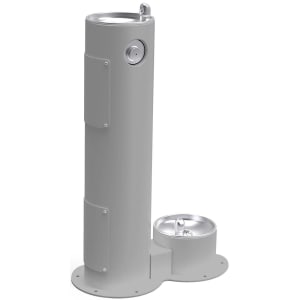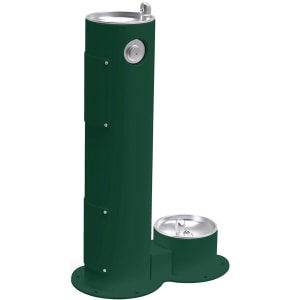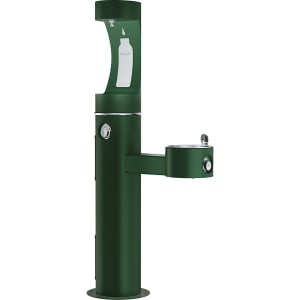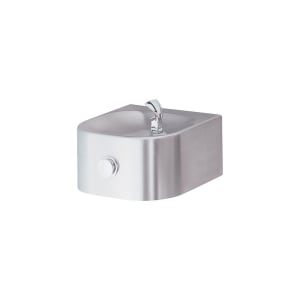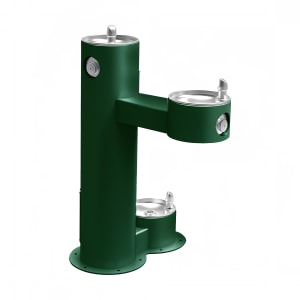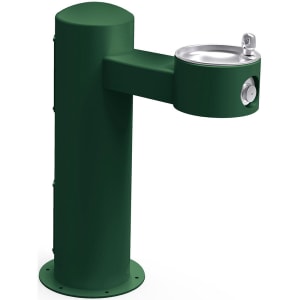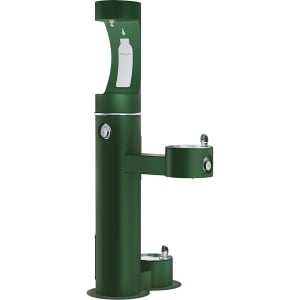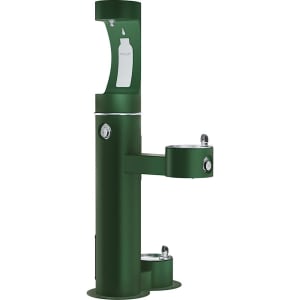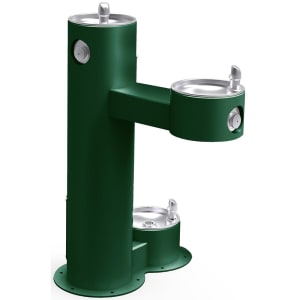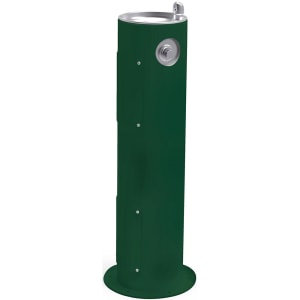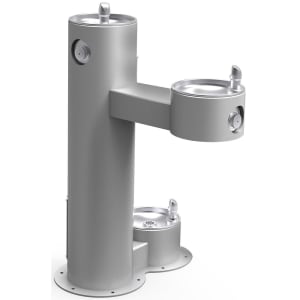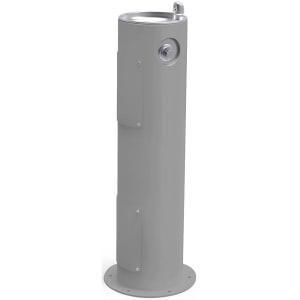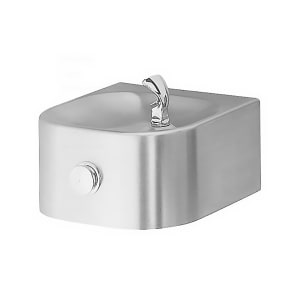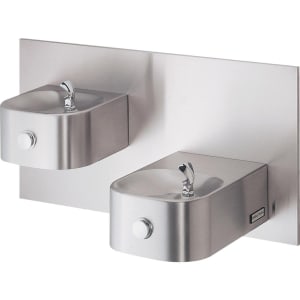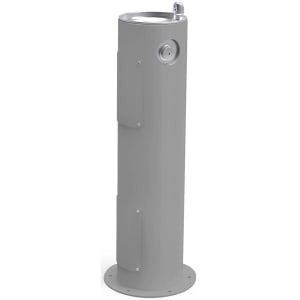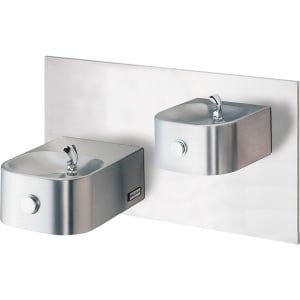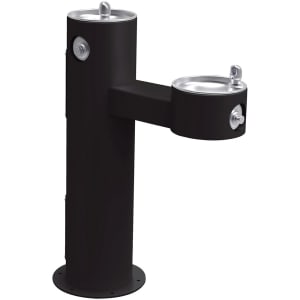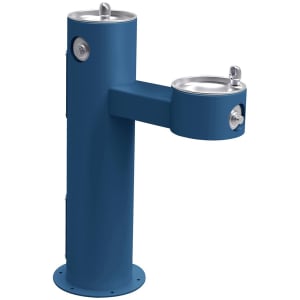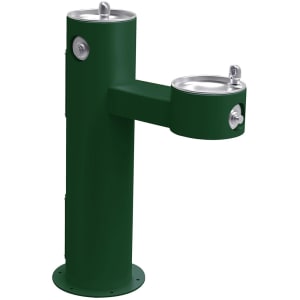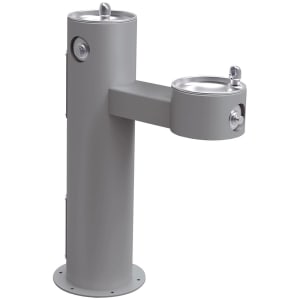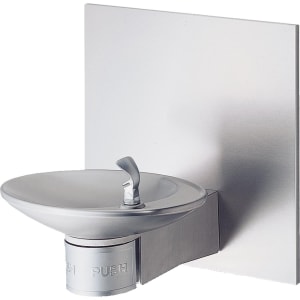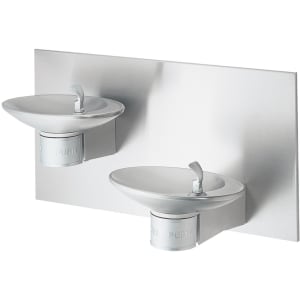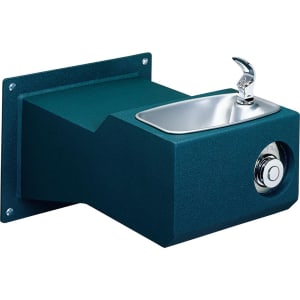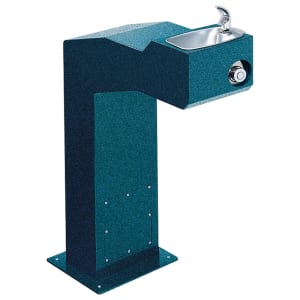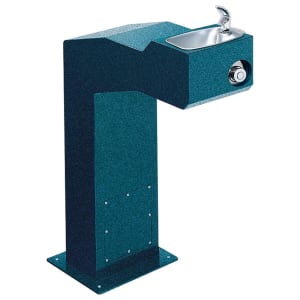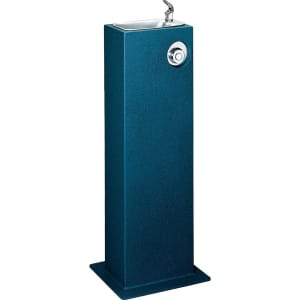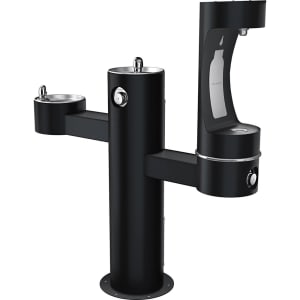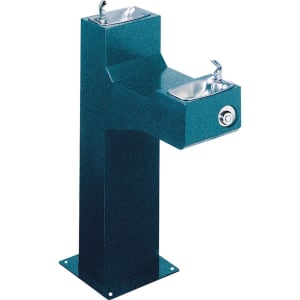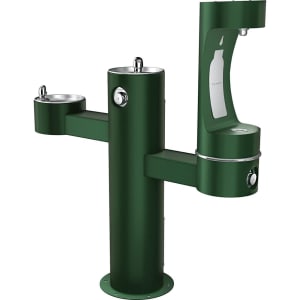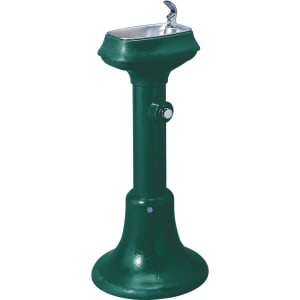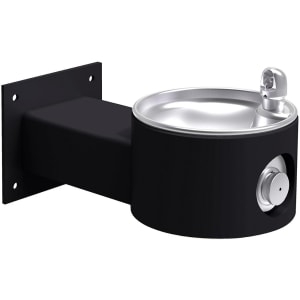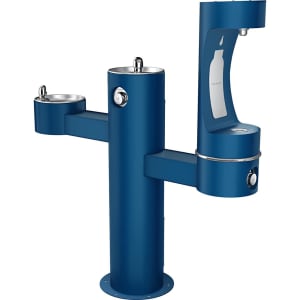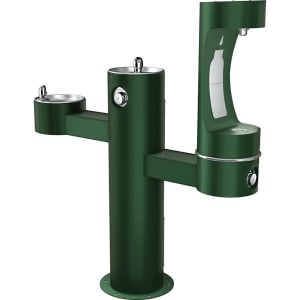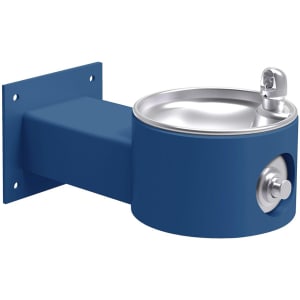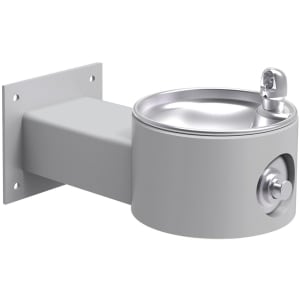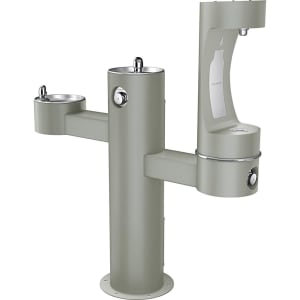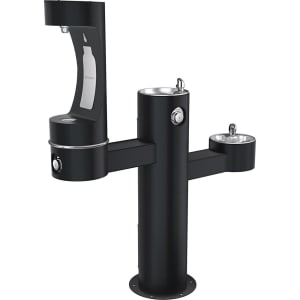Outdoor Drinking Fountains
Outdoor drinking fountains are designed to withstand harsh weathering in locations exposed to the elements, reduce plastic bottle litter in public areas, and ensure clean water is available for thirsty guests and their pets. More


Outdoor Drinking Water Fountains: What You Need to Know
Making sure clean drinking water is available to guests isn't just a good idea – in some places, it's required by law. Outdoor drinking fountains add value to any recreational venue, such as parks and playgrounds, as well as facilities and businesses accessed daily by the general public. An outdoor drinking fountain with dog bowl provides an accessible source of fresh water to enhance the health and comfort of visitors and their pets, so they'll be more likely to return.
In areas where people attend day festivals, sporting matches, and similar events, providing an option for free water instead of expensive sugary drinks can avoid dehydration dangers and maximize guests' enjoyment. Outdoor drinking water fountains also help reduce litter caused by plastic beverage bottles and aluminum cans, alleviating overloaded waste management systems.
Common Questions About Outdoor Drinking Fountains
What's the best material for outdoor drinking fountains?
- Stainless steel fountains are especially resilient against corrosion in sandy, salty areas such as beaches and arid desert park lands. However, they also reflect light sharply and aren't temperature resistant – they can heat up from the sun or freeze from the cold, making them uncomfortable to touch.
- Powder-coated or painted steel finishes come in many colors to match existing park fixtures, but can retain scratches and scrapes that may compromise the exterior's corrosion resistance.
- Galvanized steel is a cost-efficient option; however, it doesn't resist rust as well as stainless steel. As with all types of steel outdoor fountains, galvanized options can resist dents from day-to-day impacts.
- Enamel-coated iron provides a neat, clean look and is extremely sturdy. The enamel is thicker than a powder coat but still can get chipped if it's struck hard enough.
- Cast aluminum can be modeled in various shapes to mimic the surrounding architecture in historical districts and blend in with park fixtures. Like powder-coated steel, cast aluminum usually is painted, meaning it can come in several colors but is susceptible to scratches from heavy use.
- Composite or aggregate stone is aesthetically pleasing and resists absorbing heat and cold better than uncoated metal. These fountains can be made with thin outer panels that streamline access during repairs but may retain damage from impact or vandalism.
- Concrete is very heavy and may require specialized installation, but withstands impacts, weathering, and heat absorption. This material can be given an aggregate stone exterior finish for a natural, visually pleasing appearance.
What kinds of outdoor drinking water fountains are there?
Outdoor drinking fountains come in many configurations, including unique combinations of the features described below.
Refrigerated fountains provide chilled water and are especially useful at locations such as playgrounds, beaches, running tracks, sports fields, and anywhere else where guests participate in strenuous physical activities or get heated by the sun. Unlike other options, refrigerated outdoor drinking fountains need both plumbing and electrical connections to operate, and may require more maintenance.
Freestanding units don't require an existing building for installation. These fountains can be installed anywhere that plumbing connections exist or can be added, making them versatile for placement in areas where structures such as rest houses and visitor centers don't exist.
Wall-mounted options install directly to existing structures such as public restrooms or changing rooms. They're simple to install because they connect directly to existing plumbing systems and can be protected from freezing if attached to a climate-controlled building.
ADA-compliant fountains are mandated in many municipalities and provide accessible water to users with height or mobility restrictions. It's important to check local regulations to determine what type and how many ADA-accessible fountains are required for your facility.
An outdoor drinking fountain with dog bowl is pet accessible and provides a convenient way for guests to take care of their furry friends as they enjoy outdoor recreational activities. Particularly suitable for dog parks and dog-friendly beaches, an outdoor drinking fountain with dog bowl is a welcome amenity in areas near walking trails and public parks.
Winterized fountains are specifically designed to resist freezing in locations that often drop below 32 degrees Fahrenheit during the winter. Some winterized fountains require electricity to function, while others resist freezing by keeping drinking water far underground below the frost line. Before selecting a winterized fountain, it's important to know how deep the frost line is, as well as how cold outdoor temperatures get during the winter.
Multi-station designs can provide a mix of bubbler types, including standard height, ADA-accessible, and dog bowl options. By selecting a multi-station fountain, venues can provide fresh drinking water to multiple users without multiplying their installation costs. These can also replace existing fountains, ensuring compliance with ADA regulations without installing additional plumbing.
Where should I put outdoor drinking water fountains?
The best place for an outdoor drinking water fountain is different for each location and is determined by a mix of factors.
If the unit is wall mounted, it must be installed on an existing structure. You'll need to find out if plumbing connections already exist or where new connections can be installed, if the building's plumbing must be modified. If the fountain will be chilled, it should be connected to the building's electrical system, which may limit installation options. You'll also need to consider surrounding features such as swinging doors that could strike the fountain and cause damage if it's installed in the wrong spot. Consider where the fountain is most visible to patrons, as well as where it's most accessible to those who may have mobility impairments.
If the outdoor drinking water fountain is a freestanding unit, determine whether plumbing connections already exist in the area or, if none are available, where the most cost-effective place to add them is. If the fountain needs a drainage system installed, determine what type it needs and where it can be added. Look for areas where an outdoor drinking fountain won't be struck by moving vehicles or falling tree branches. If it's a winterized fountain, you'll need to know how deep the frost line is and where you can dig without striking underground pipes or wires.
For all types of outdoor drinking water fountains, it's important to place them in areas where the greatest number of people are likely to gather or pass by, as well as where they'll be most visible from a distance.
How many outdoor drinking fountains do I need?
When determining how many outdoor fountains to install, it's important to ensure visitors to the facility have access to drinking water when they need it.
First, consider the size of the area the fountains will serve. If possible, space outdoor drinking fountains throughout the area, making clean water conveniently accessible to guests without requiring them to travel excessive distances to reach it.
Another aspect to consider is the number of people who will use the area during peak times. Determine the maximum flow rate for each option to determine how many units will be required to fulfill demand at peak times. Consider the maximum flow rate that can be handled by the plumbing system to ensure the number of fountains being installed won't overtax existing infrastructure.
Think about how many bubblers or spouts each fountain has. If a high volume of traffic is centered in a particular area, it may be more cost efficient to install one multi-station fountain in that spot instead of two or three separate fountains in multiple areas. Check local regulations to determine if there is a minimum number of fountains required and how many ADA-compliant units should be installed.
Finally, consider whether visitors are likely to bring pets to the location to determine if an outdoor drinking fountain with a dog bowl is necessary. Multiuse fountains can reduce the total number of fountains needed as well as cut installation costs by addressing several of these needs at one time.

